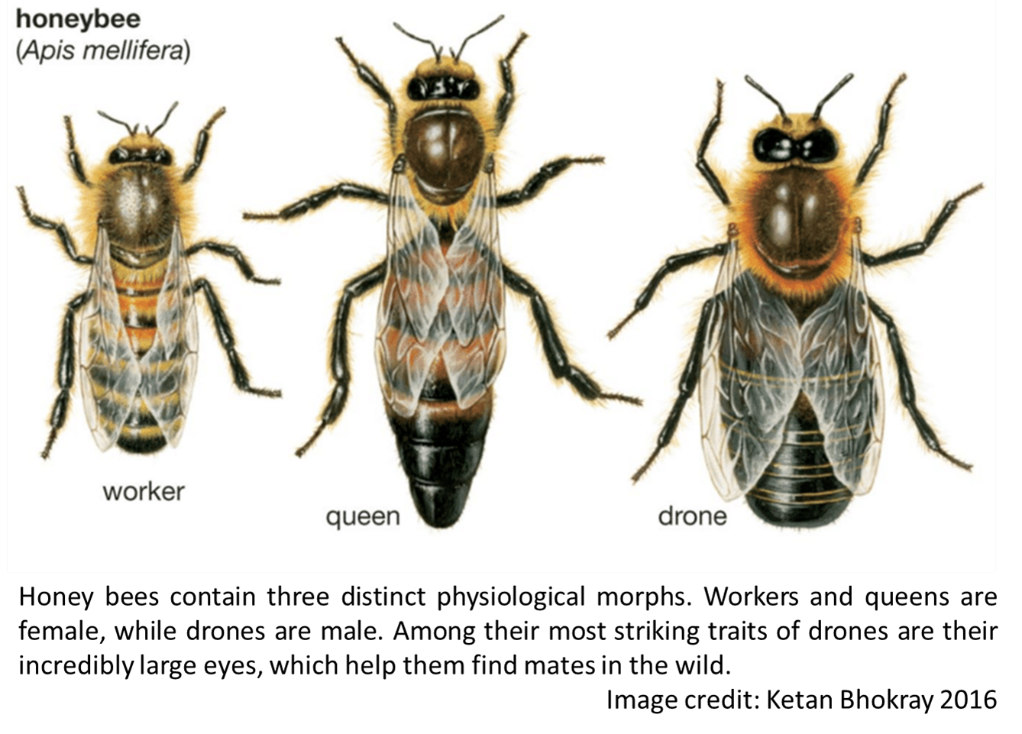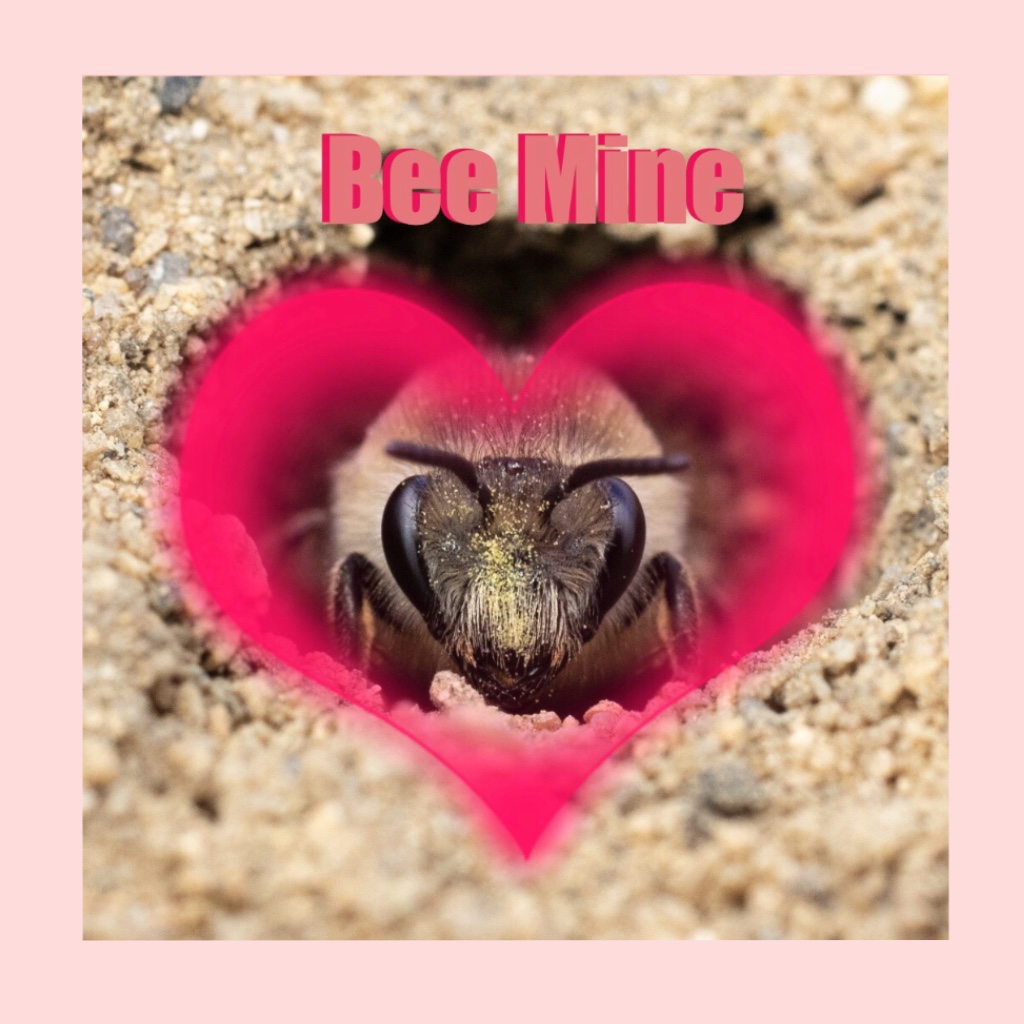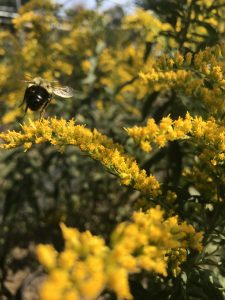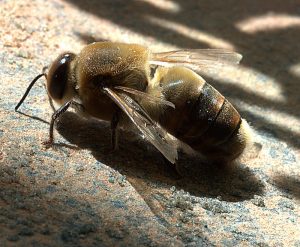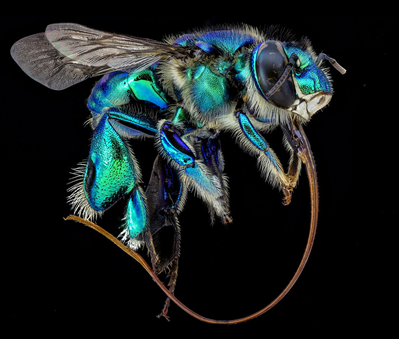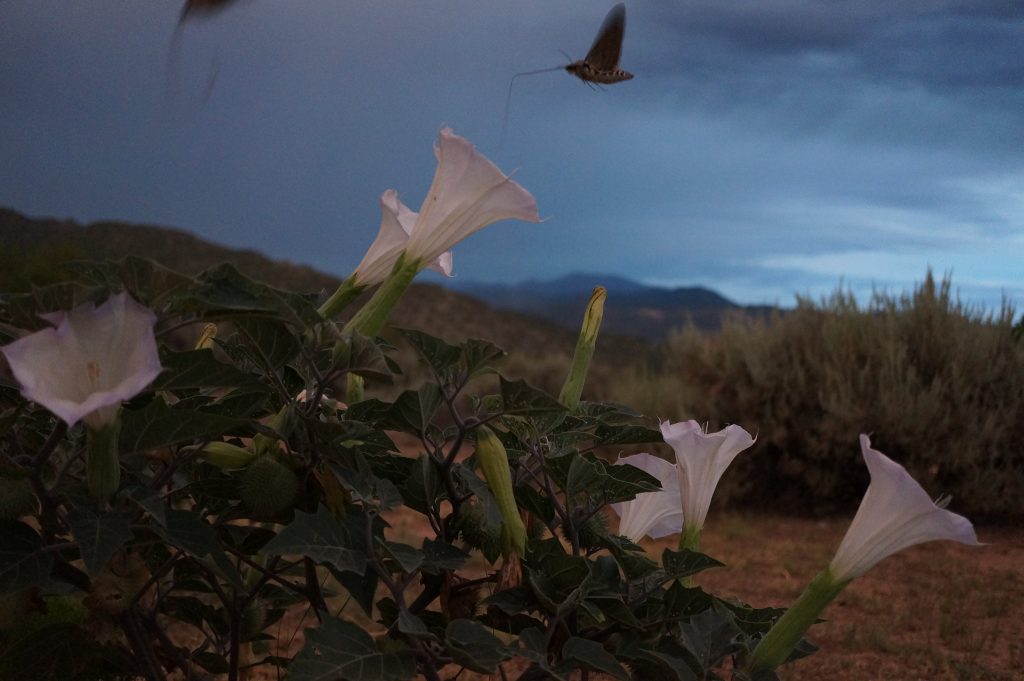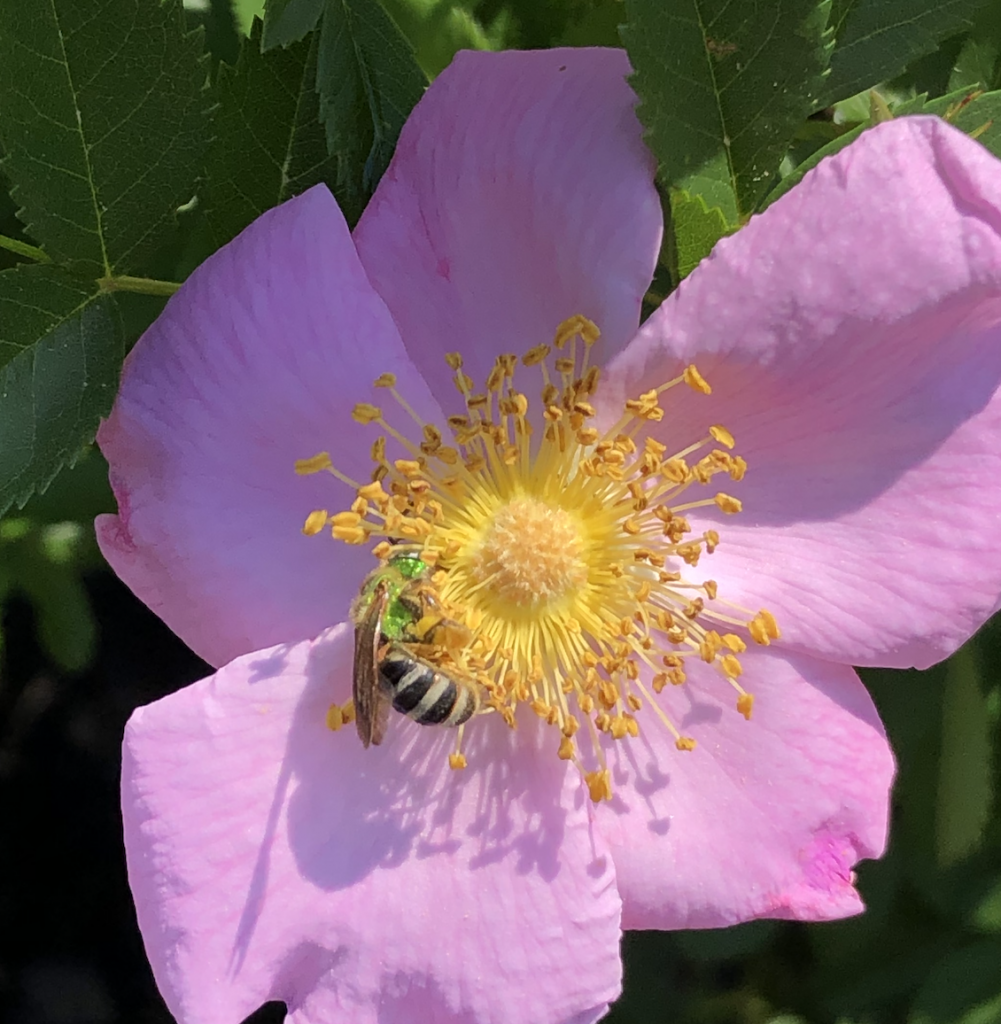by Atticus Murphy
Planting a pollinator garden is all the rage these days, but if you’ve never gardened before, it may seem like a daunting task. Don’t worry, it doesn’t have to be complicated! You can support pollinators in your yard by taking several easy and important actions. Tufts Pollinator Initiative has distilled it down to the 5 most important actions you can take today!
1. Plant a diverse set of flowering plants
Diversifying the flowers in your garden is the best way to support the most types of pollinators. Shoot for diversity on all levels: color, flower shape, size, and, most importantly, bloom time. Each pollinator species might only be active for a few weeks and visit a small number of plants, so adding flower diversity throughout the year will almost always boost your yard’s pollinator diversity (and give you blooms year round!). A good place to start? TPI’s top 10 flowers for bees!
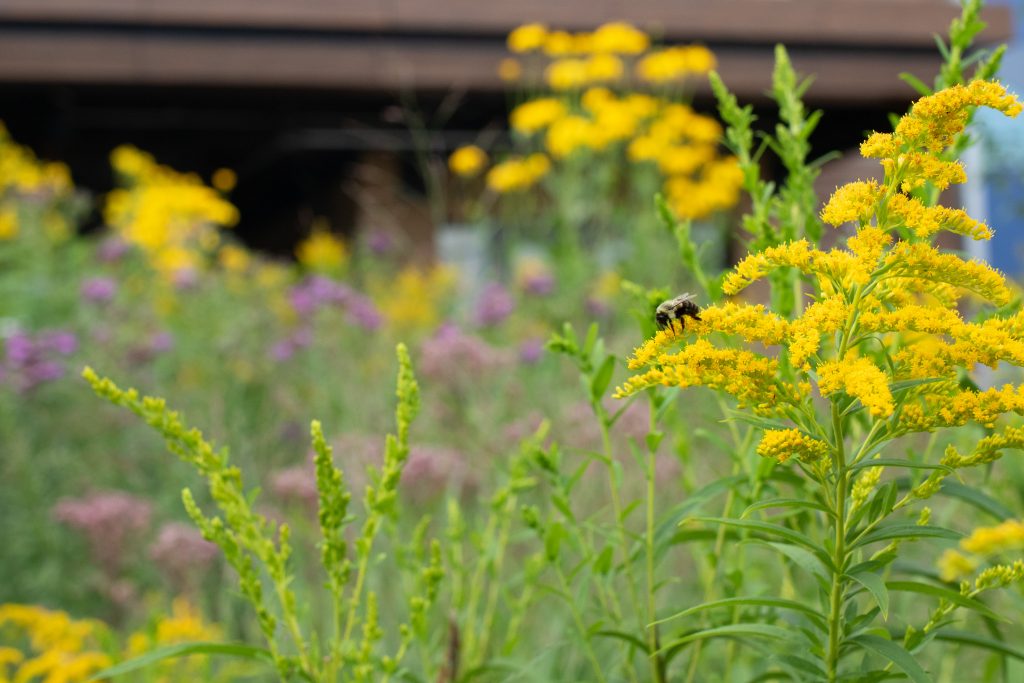
2. Add woody plants like trees and shrubs
Native trees and shrubs make excellent additions to pollinator gardens because they provide resources that herbaceous, perennial flowers often don’t. For instance: many native trees and shrubs bloom early in spring, at a time when few other plants are blooming on the landscape. In addition, trees and shrubs provide homes for solitary bees and many butterflies depend on tree leaves to complete their life cycles. As a bonus, trees and shrubs require very little maintenance after their first few years and provide shade for decades! To help you pick, check out TPI’s top 10 trees and shrubs for bees.
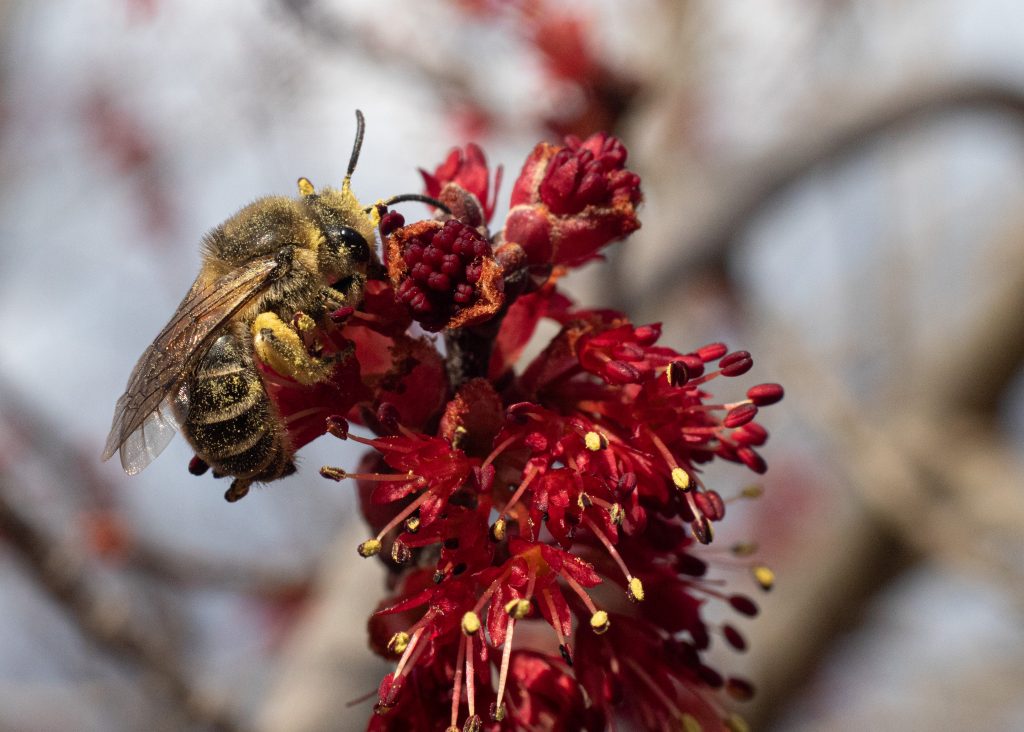
3. Grow native plants
To support our native pollinators, grow native plants. Our native pollinators have been in relationships with native plants for thousands of years, and sometimes have evolved such a picky diet that only one or a few native plant hosts will do. Avoid non-native ornamental plants (esp. doubled cultivars) like petunias and impatiens–they either offer unsuitable food resources, or have been bred to offer no pollen and nectar whatsoever. Compared to traditional ornamental plants, native plants can survive is less than ideal soils and periods of droughts, while still filling your garden with bursts of color. Pick up your locally-grown native plants at TPI’s summer plant sale!
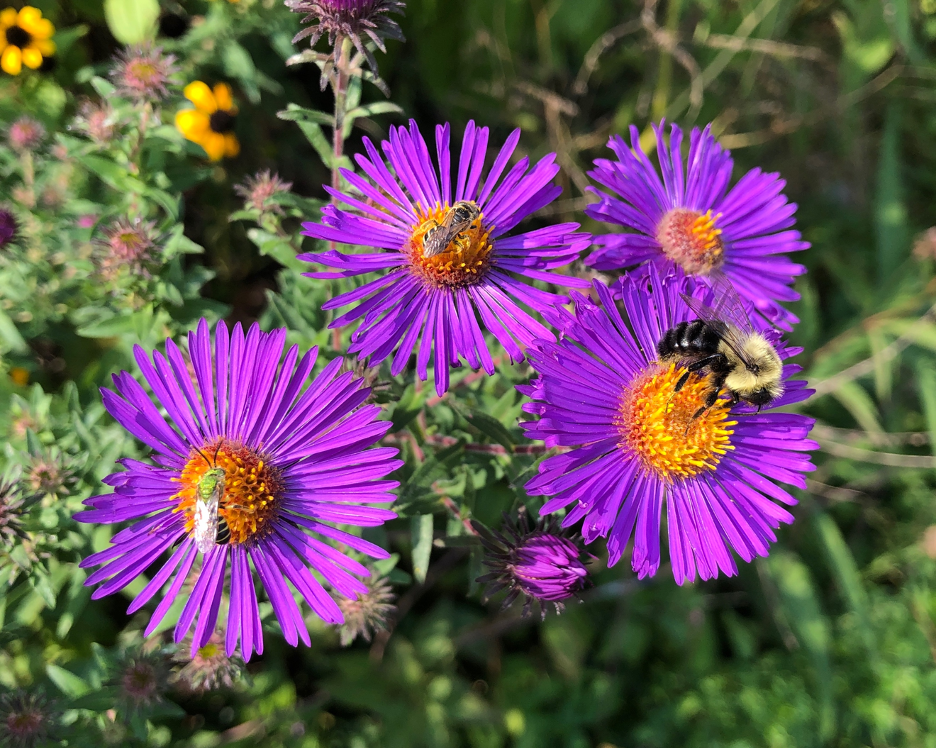
4. Minimize herbicide and insecticide use
It’s simple: to keep insect pollinators around, don’t apply pesticides. Herbicides kill the flowers that pollinators use for food. Leaving weedy flowers (“weeds”) to bloom creates abundant and diverse resources for pollinators. And insecticides like neonicotinoids are deadly for pollinators: remember, anything that kills a mosquito almost certainly kills a bee. Even if you apply these chemicals to a separate area of your yard, they have a high potential of running off into the surrounding pollinator friendly areas. Stick to hand weeding problem plants whenever possible and try handling pesky insects in chemical-free ways like limiting standing water or having nests removed.
5. Mow remaining lawn infrequently
Conventional turf lawns are fun play spaces, but monocultures of grass do not support pollinators, so it’s always best to limit the amount of lawn on your property. For any lawn that you keep around, one of the most impactful things you can do is to mow as little as possible. Even going from mowing weekly to mowing every other week leads to dramatic increases in the number of pollinators and flowers found in lawns. You don’t need to let the lawn look truly wild to achieve big benefits either! Leaving a margin of unmowed grass around the edge can provide valuable nesting habitat for bees and low-growing flowers like white clover.
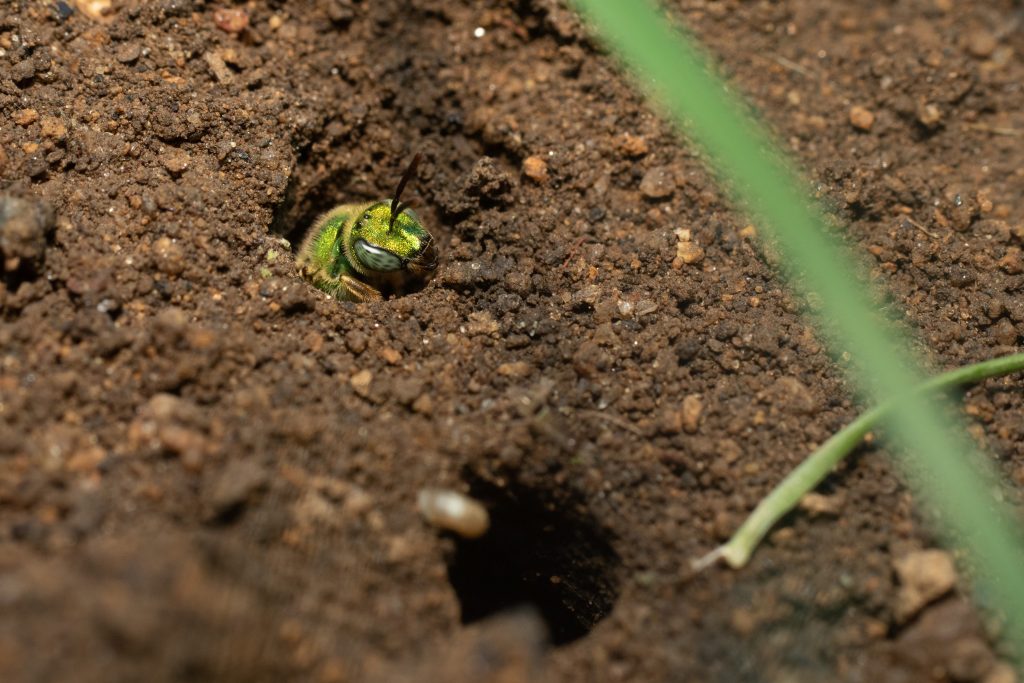
Following these simple steps can help you take big strides towards making your patch of the urban landscape a haven for pollinators. One of the most rewarding things about implementing steps like these is that you are nearly guaranteed to see returns after just a small amount of investment–if you plant it, the bees, butterflies, wasps, and hover flies really will come. Happy gardening!
To learn more, check out our publication on pollinator gardening produced in collaboration with Tufts CREATE Climate Solutions.


